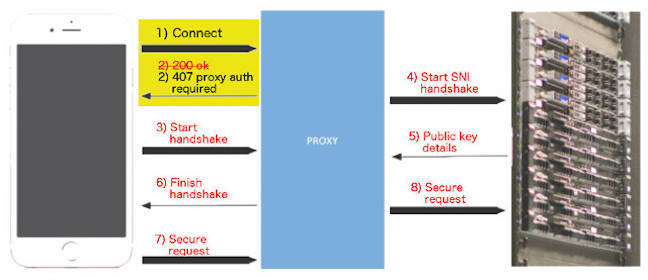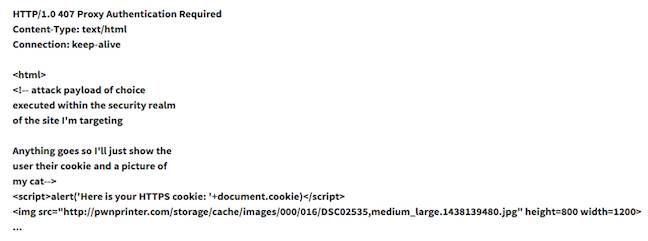This article is more than 1 year old
FalseCONNECT sends vendors scrambling to patch proxy MITM bug
Protocols pwned, but patches parachuted for many popular platforms
For the many people that dislike corporate proxies, this probably won't be much of a surprise: a bunch of environments are vulnerable to man-in-the-middle attacks.
“FalseCONNECT” is a combination of protocol bug and implementation error – which means it affects end users via operating systems, as well as network devices.
The problem is in how two Web protocols interact: HTTP CONNECT (which asks a firewall or proxy to forward a connection, described in RFC 7230), and HTTP Authentication (described in RFC 7235), which the firewall or proxy use to ask users to authenticate.
The discoverer, Jerry Decime, explains FalseCONNECT here.
If an attacker can see users' requests to connect (for example, via a rogue wireless access point), they can replace the proxy's OK message (expected under RFC 7230) with “407 Proxy Authentication Required” message – and grab the victim's credentials.

Here's some detail from the US CERT advisory about this mess:
“HTTP CONNECT requests and 407 Proxy Authentication Required messages are not integrity protected and are susceptible to man-in-the-middle attacks. WebKit-based applications are additionally vulnerable to arbitrary HTML markup and JavaScript execution in the context of the originally requested domain.”
This is a potent attack, because the user's browser can then go ahead and establish their “trusted” connection via the proxy. The victim won't get anything like a browser warning to tell them something's wrong.
And because it happens before the handshakes set up trust, it doesn't trip warnings like pinned certificates.
“This vector happens before the server public key can be provided to the client as shown in step five, but not before a trust relationship has already been established or maintained by the browser or application as shown in step one,” Decime writes.
“Unfortunately this implementation resulted in false trust situations whereby untrusted code delivered in the response body of the CONNECT could execute within trusted browser and application states.”
Who's affected?
So far, the CERT advisory lists Apple, Microsoft, Opera, and Oracle as affected. Lenovo reckons its machines aren't affected.
Ten other vendors and systems are on the notice but are still working out whether they're vulnerable: Arista, Belkin, CentOS, Cisco, CoreOS, Debian, DesktopBSD, DragonFly BSD, EMC and F5 Networks.
Others will, we expect, be added to that list as time passes.
Decime's post concentrates on how the bug can be exploited against iOS, because of how WebKit handles the CONNECT / 407 interaction.

He notes that the attack code leaves out the header that the 407 message should include, because that would risk tipping the user off:
“On iOS, WebKit renders the markup provided in a '407 Proxy Authentication Required.' This allows a proxy server that requires authentication to give the user a soft-error after a certain number of failed authentication attempts, but because the contents of the HTTP response are rendered within a trust realm, it can be used to attack cryptography trust in WebKit.”
Apple has fixed the bug in the iOS 9.3.3 update and in El Capitan's 10.11.6 update. ®
